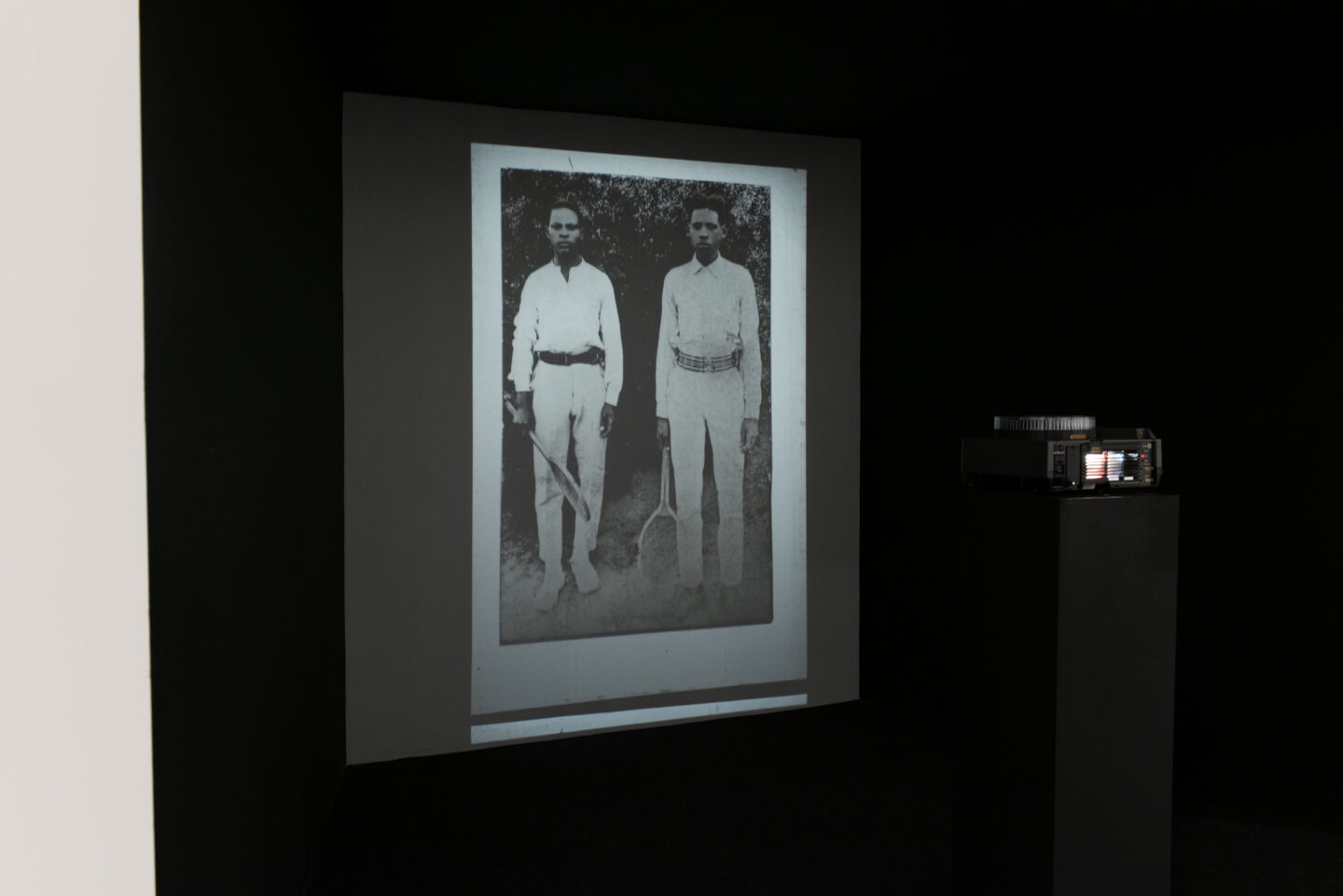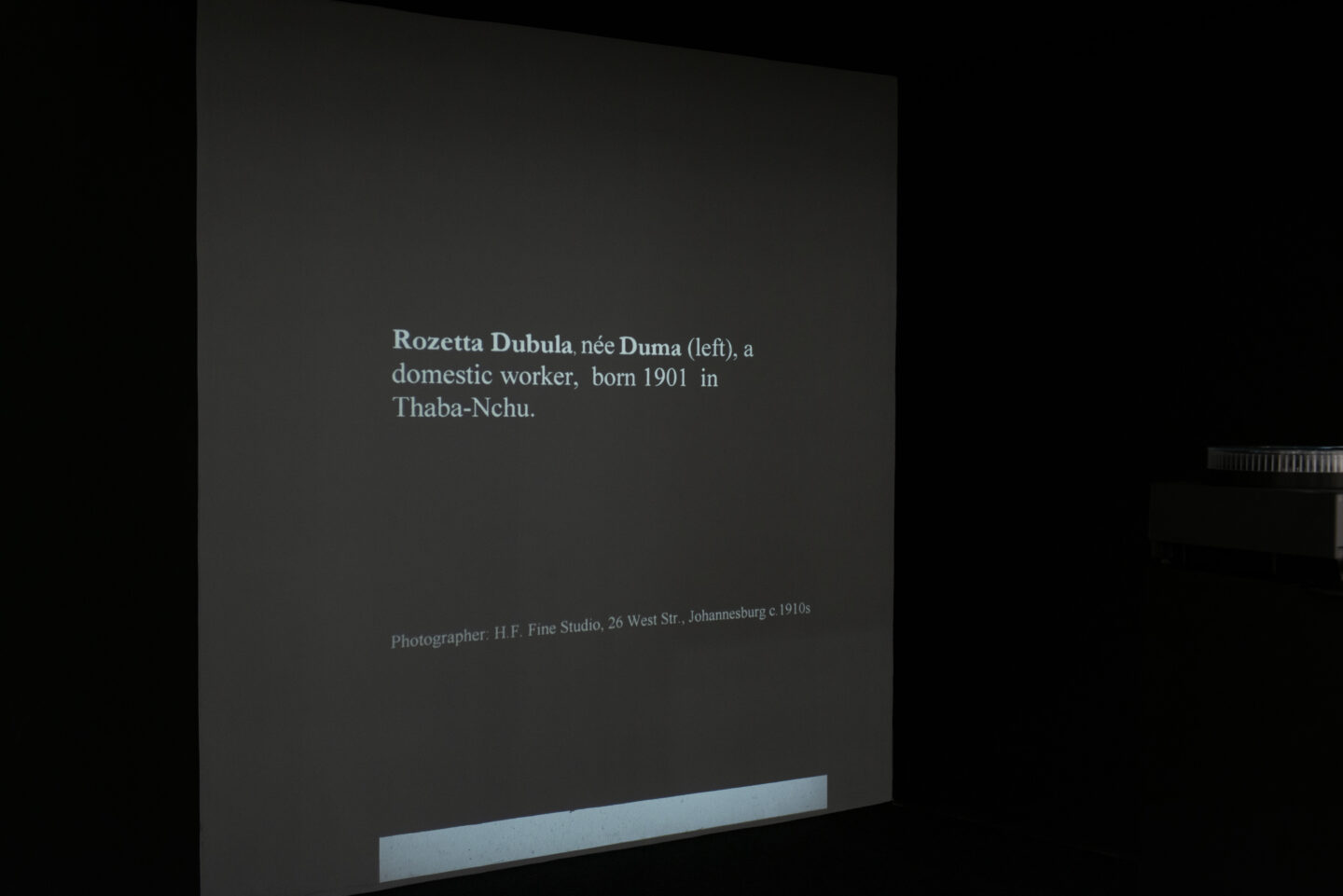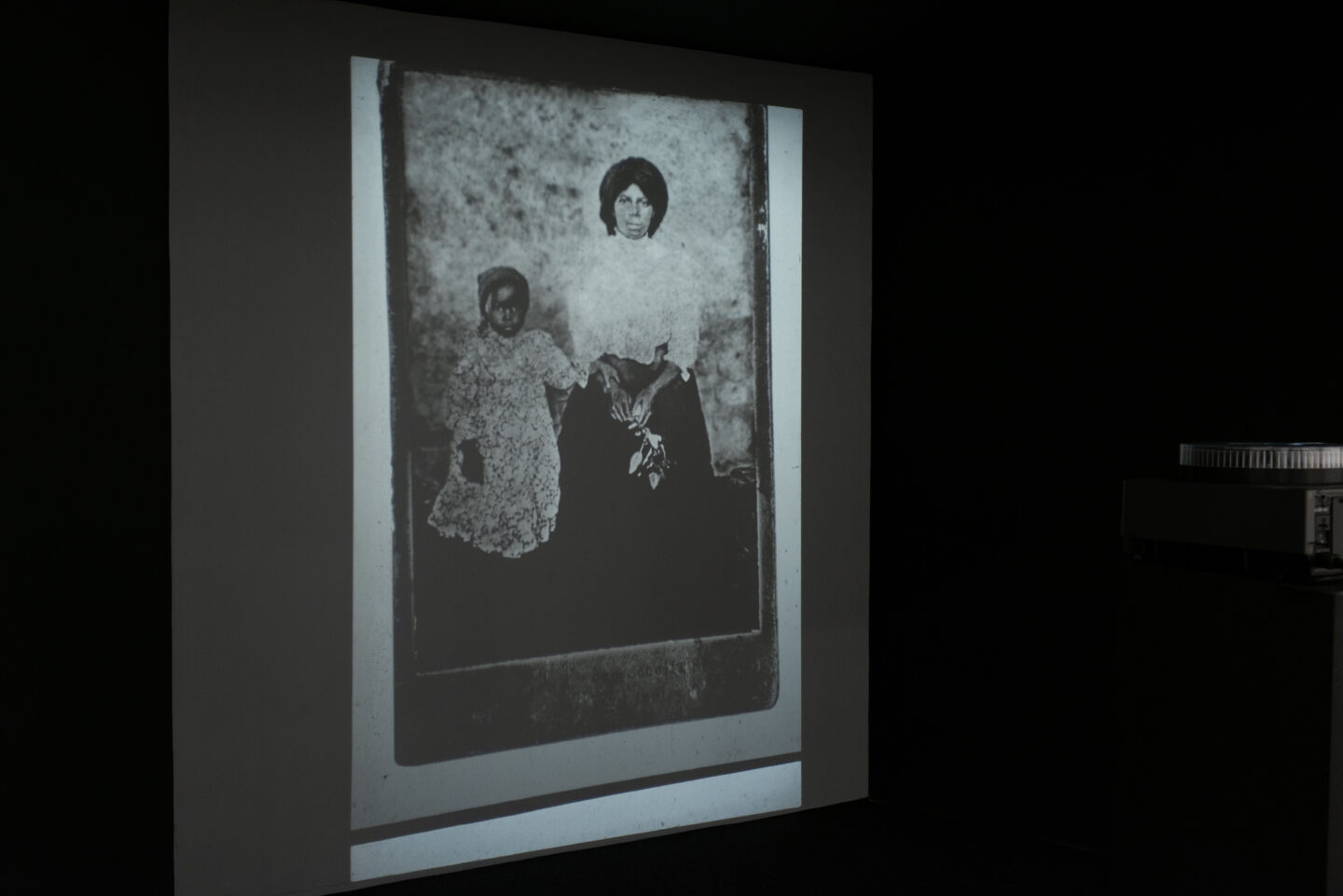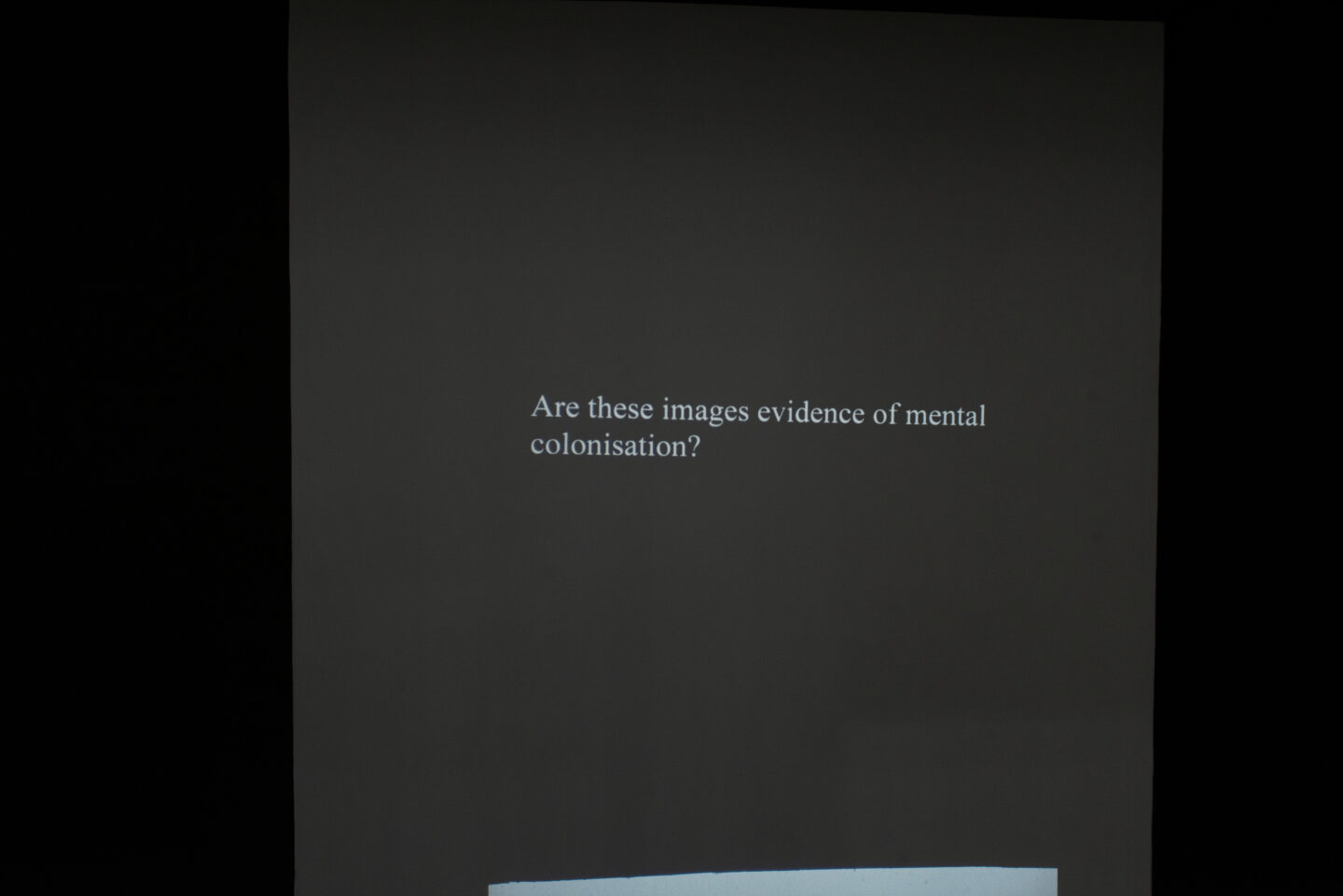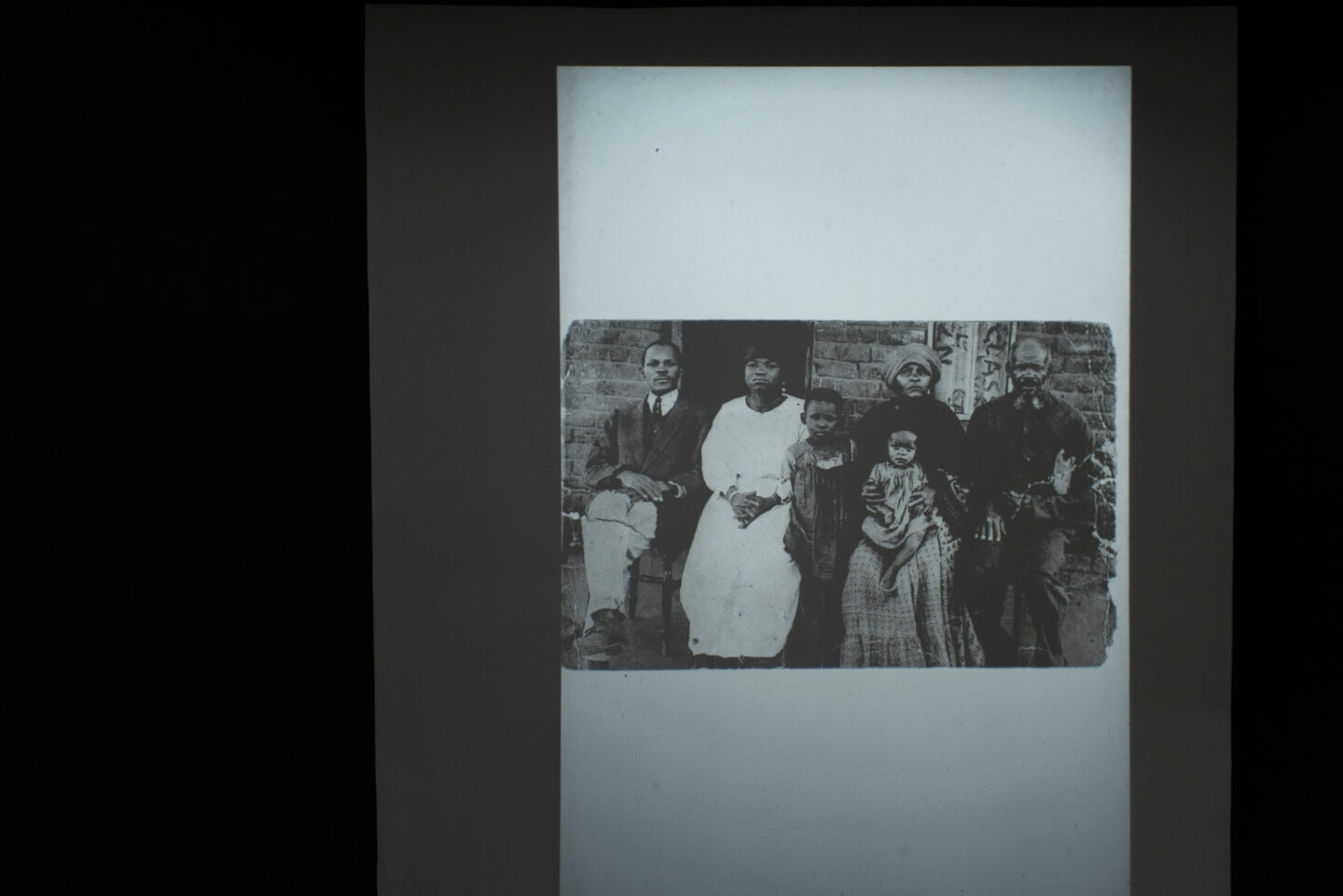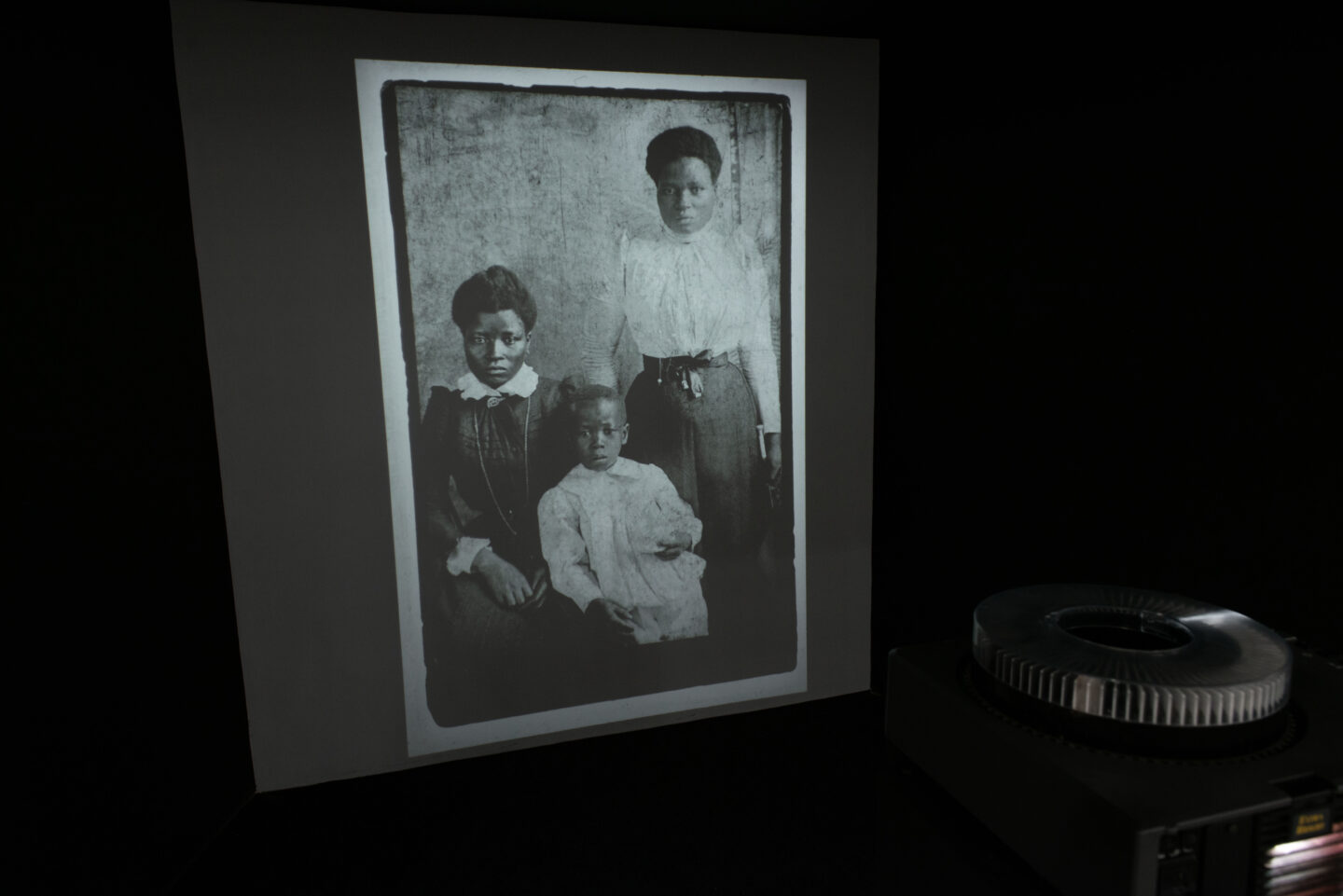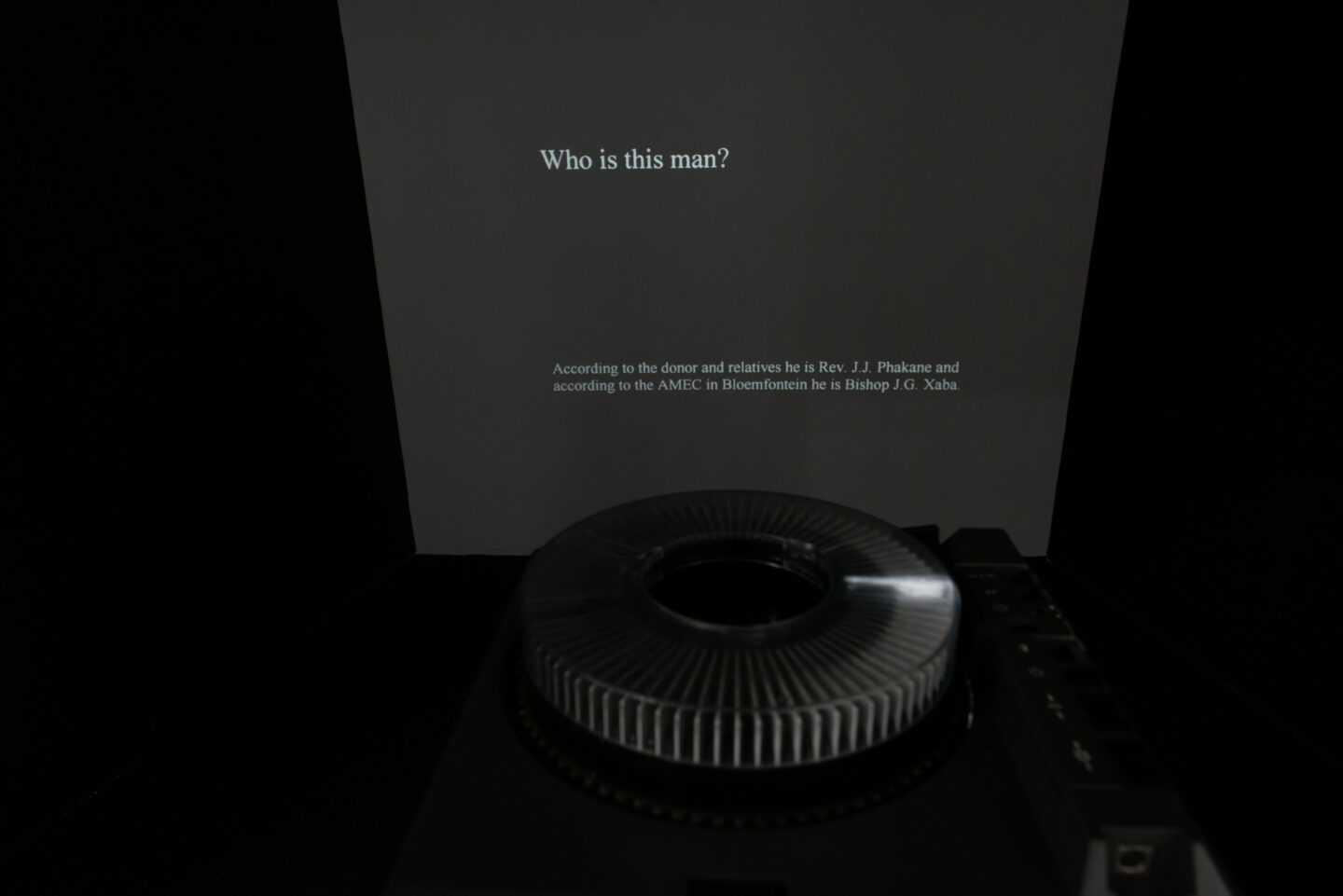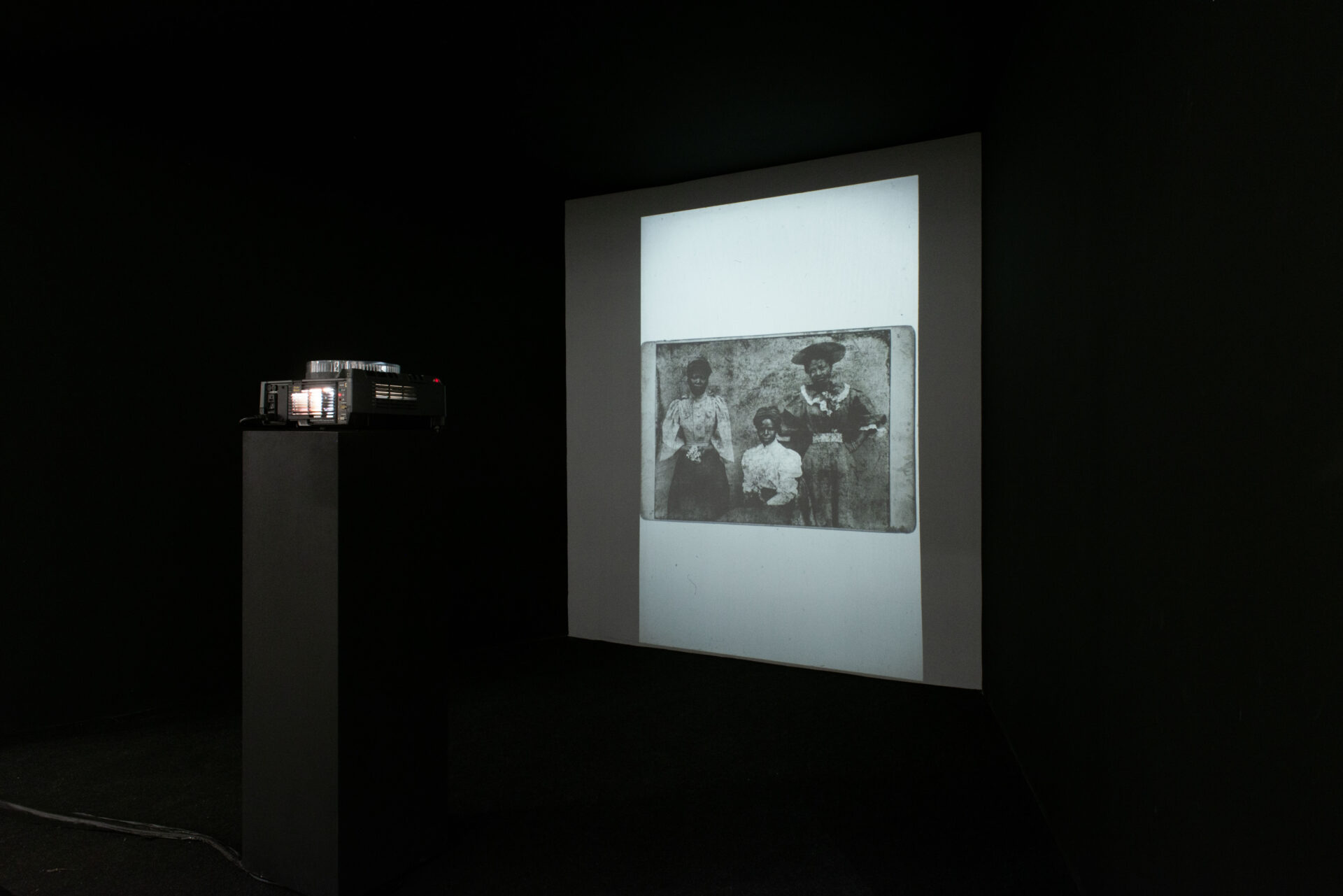
Santu Mofokeng
“Who were these people?
What were their aspirations?
What was the occasion?
Who is gazing?
Look at me.”
These transfixing questions and provocations by the photographer Santu Mofokeng (1956–2020) appear interwoven between arresting portraits of black working- and middle-class families from an era where the world went to war twice and aApartheid took hold over the southern expanses of the African continent. Made in collaboration with ten families across the provinces of Gauteng, North West, and Orange Free State (South Africa), The Black Photo Album / Look At Me: 1890–-1950 is a monumental image text installation masquerading as a photo album slideshow. Unfolding over eighty slides (35 images and 45 texts), the work collides conceptual and vernacular forms; individual and collective subjects; spectral and material worlds. As a whole, The Black Photo Album / Look At Me: 1890–-1950 is archive as assemblage, a formulation that theorist Achille Mbembe considers “a story that acquires its coherence through the ability to craft links between the beginning and the end.”¹
Straddling multiple moments in time, the piece took root during the fledgling years of South African democracy, when Mofokeng worked in the visual documentation department of the African Studies Institute at the University of the Witwatersrand, in Johannesburg. While many were fixated on rendering the future of the public sphere in technicolor, Mofokeng turned inwards, orchestrating this in-depth research project rooted in the monochrome past. He has said “I was doing this project not to deny other stories, other narratives, but I was trying to insert this work within the body of knowledge of the past.”² First presented at the 1997 Johannesburg Biennale, The Black Photo Album / Look At Me: 1890–-1950 resounds even more powerfully now, in São Paulo, in the beginning of another century. It subverts the master narratives of the nation state by centering minor histories, through fraught forms of relation that can only be generated photographically.
oluremi oabanjo
1. Achille Mbembe, “The Power of the Archive and its Limits” in C. Hamilton et al. (ed.), Refiguring the Archive. Cape Town: David Philip, 2002, 21.
². Santu Mofokeng, quoted in interview with Tamar Garb. Figures and Fictions: Contemporary South African Photography. Göttingen: Steidl, 2011, 283.
- Vista da obra The Black Photo Album / Look at me, [O álbum de fotografia negra / Olhe para mim], de Santu Mofokeng na 35ª Bienal de São Paulo – coreografias do impossível © Levi Fanan / Fundação Bienal de São Paulo
- Vista da obra The Black Photo Album / Look at me, [O álbum de fotografia negra / Olhe para mim], de Santu Mofokeng na 35ª Bienal de São Paulo – coreografias do impossível © Levi Fanan / Fundação Bienal de São Paulo
- Vista da obra The Black Photo Album / Look at me, [O álbum de fotografia negra / Olhe para mim], de Santu Mofokeng na 35ª Bienal de São Paulo – coreografias do impossível © Levi Fanan / Fundação Bienal de São Paulo
- Vista da obra The Black Photo Album / Look at me, [O álbum de fotografia negra / Olhe para mim], de Santu Mofokeng na 35ª Bienal de São Paulo – coreografias do impossível © Levi Fanan / Fundação Bienal de São Paulo
- Vista da obra The Black Photo Album / Look at me, [O álbum de fotografia negra / Olhe para mim], de Santu Mofokeng na 35ª Bienal de São Paulo – coreografias do impossível © Levi Fanan / Fundação Bienal de São Paulo
- Vista da obra The Black Photo Album / Look at me, [O álbum de fotografia negra / Olhe para mim], de Santu Mofokeng na 35ª Bienal de São Paulo – coreografias do impossível © Levi Fanan / Fundação Bienal de São Paulo
- Vista da obra The Black Photo Album / Look at me, [O álbum de fotografia negra / Olhe para mim], de Santu Mofokeng na 35ª Bienal de São Paulo – coreografias do impossível © Levi Fanan / Fundação Bienal de São Paulo
- Vista da obra The Black Photo Album / Look at me, [O álbum de fotografia negra / Olhe para mim], de Santu Mofokeng na 35ª Bienal de São Paulo – coreografias do impossível © Levi Fanan / Fundação Bienal de São Paulo
Santu Mofokeng (Soweto, South Africa, 1956 – Johannesburg, South Africa, 2020) was a photographer. Among his main subjects were the relations between history and land, memory and spirituality. He experimented with unconventional formal techniques in the documentary genre, incorporating elements such as smoke, fog, and dust, among other materials that conceal rather than expose the portrayed subjects. Three decades of his work were compiled in the publication Stories (2019). He was a member of the Afrapix collective for most of the 1980s.

 Português
Português